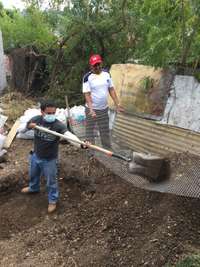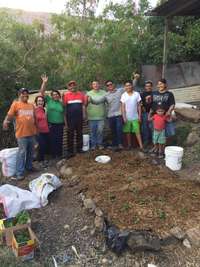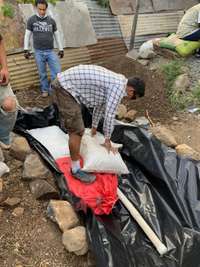
Figure 7. Digging the foundation for a 100-fold garden, and sifting the soil to be used as filler for the reservoir (material left on top of the screen) or to be mixed and used as topsoil (material that passes through the screen). Source: Dan Sikkink.
Dan Sikkink sent us a few photos of a 100-fold garden he helped build in Honduras. He commented, “We changed the size because of lack of room. Water is so very hard to come by in this area so [the 100-fold garden] was an excellent solution for this area.”
When asked what they had used for “filler” material in the reservoir area, Dan shared, “The people live in an area where the land is mostly rock. When we dug the hole in or a trench out, we screened the material (Figure 7). About 50% was rock. We used [what was left on the screens] to fill the bags [that are laid in the reservoir (Figure 8)]. We mixed the [finer material that fell through] with topsoil, and we got compost from the greenhouse. There was a lot of pony dung around in the streets of the community, so I had the kids gather up a sack full and we made a manure tea that they will use for a topdressing fertilizer.”
“We planted tomatoes, celery, peppers, and cabbages [in our 100-fold garden], using the square gardening method that was suggested in EDN” (Figure 9).

Figure 9. The finished and planted 100-Fold Garden! Source: Dan Sikkink.

Figure 8. Placing the bags of reservoir filler on top of the plastic. Source: Dan Sikkink.
Cite as:
ECHO Staff 2020. 100-Fold Gardens in Honduras. ECHO Development Notes no. 147